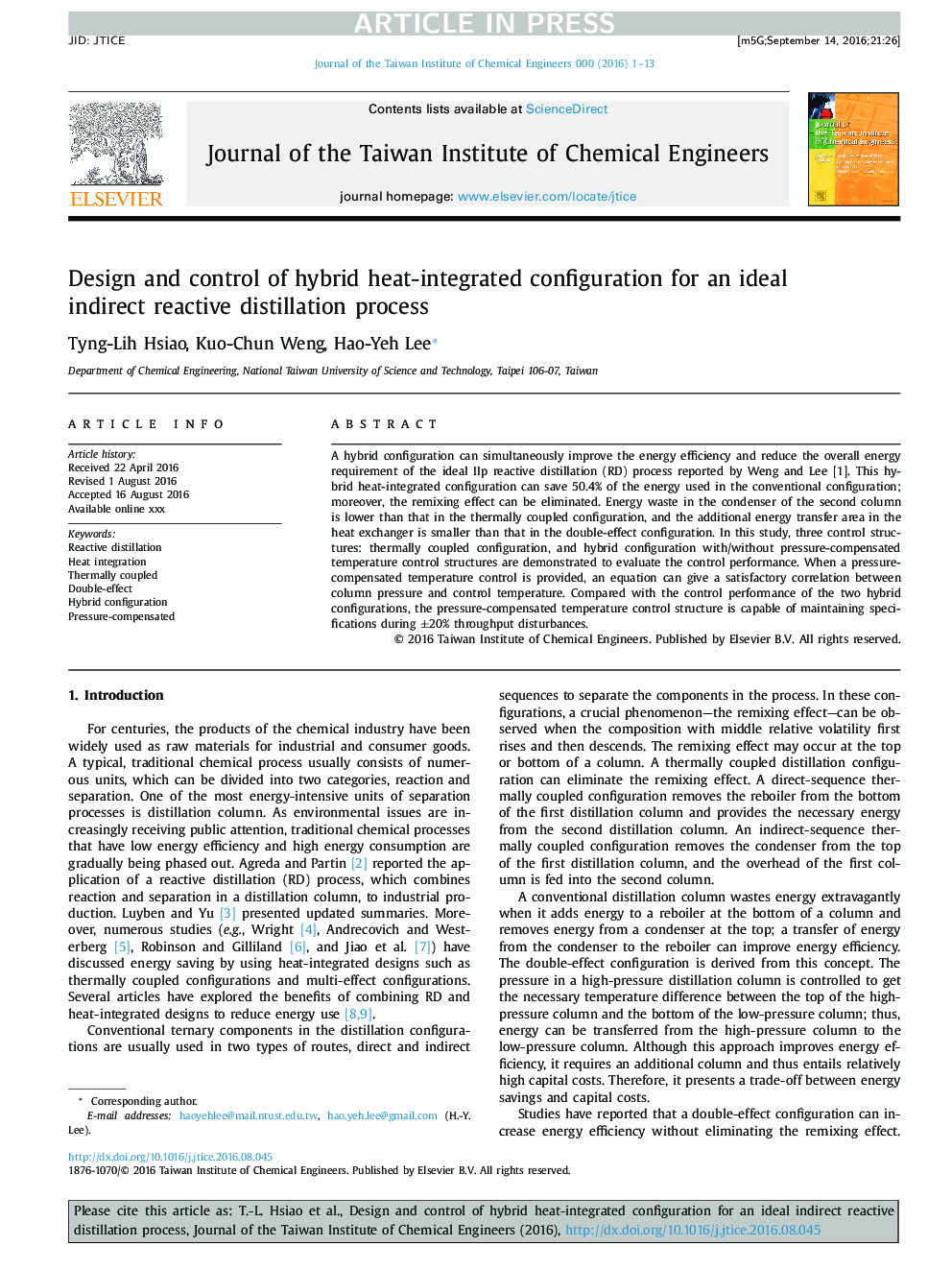| Article ID | Journal | Published Year | Pages | File Type |
|---|---|---|---|---|
| 4998694 | Journal of the Taiwan Institute of Chemical Engineers | 2017 | 13 Pages |
Abstract
A hybrid configuration can simultaneously improve the energy efficiency and reduce the overall energy requirement of the ideal IIp reactive distillation (RD) process reported by Weng and Lee [1]. This hybrid heat-integrated configuration can save 50.4% of the energy used in the conventional configuration; moreover, the remixing effect can be eliminated. Energy waste in the condenser of the second column is lower than that in the thermally coupled configuration, and the additional energy transfer area in the heat exchanger is smaller than that in the double-effect configuration. In this study, three control structures: thermally coupled configuration, and hybrid configuration with/without pressure-compensated temperature control structures are demonstrated to evaluate the control performance. When a pressure-compensated temperature control is provided, an equation can give a satisfactory correlation between column pressure and control temperature. Compared with the control performance of the two hybrid configurations, the pressure-compensated temperature control structure is capable of maintaining specifications during ±20% throughput disturbances.
Related Topics
Physical Sciences and Engineering
Chemical Engineering
Process Chemistry and Technology
Authors
Tyng-Lih Hsiao, Kuo-Chun Weng, Hao-Yeh Lee,
